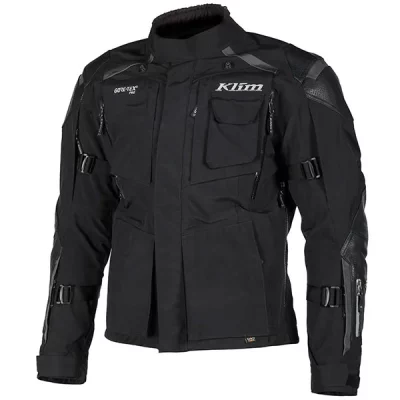For a long time, motorcycle clothing wasn’t as stringently regulated as it perhaps should have been.
With many jackets and trousers being sold as ‘Non-Protective’ with just the armour included being CE approved, it was a loophole for manufacturers to avoid the cost of having their garments fully tested.
Fully CE approved garments were, on the whole, reserved for institutions like the police and professional riders, with everyday consumers largely buying non-protective items.
In 2018 the European Committee for Standardisation stated that all motorcycle clothing produced and sold as motorcycle gear must comply with their regulations and be classed as Personal Protective Equipment.
Fast forward to 2020, and EN17092 was formally introduced as the standard that all motorcycle clothing needs to meet to comply with Regulation 2016/425.
Save Money On Your Motorcycle Insurance
- You could pay less than £195*
- Compare quotes from 25+ UK providers
- Fill in one form to compare top bike insurers
What is EN17092?
EN17092: 2020 are the current standards for motorcycle clothing, including trousers, jackets, and one-piece and two-piece suits.
If the item is deemed to meet the standards, they comply with the EU/UK regulations and will be sold as protective motorcycle clothing.
However, before we look at EN17092, we just need to recap with the original EN13595 standard as that too is still in play.
What is EN13595 all about?
In 2002 EN13595 was first published and was expected to continue until 2023.
EN13595 applies to motorcycle clothing for professional riders; It was deemed essential to run alongside EN17092.
EN13595 was mistakenly withdrawn by the European Standards Committee (CEN) upon publication of the later regulations, but it has since been re-installed and remains vital in keeping standards high.
Brexit
Regardless of Brexit and the UK having left the European Union, it was agreed that the UK would still refer to the EU legislation regarding Personal Protective Equipment which encompasses motorcycle clothing.
So the British Standards Institution will continue to contribute towards European Standards but publish them as their own.
Furthermore, the CE mark was also said to remain valid in the UK but would slowly be replaced by the UKCA mark.
You will find that some products will be dual labelled with both the CE and UKCA mark; this is simply so that the manufacturer has covered both bases to sell to both EU countries and the UK.
What is the difference between EN17092 and EN13595?
In 2018 the provisional EN17092 standards were drafted, then formalised in 2020; they apply directly to motorcycle clothing as PPE.
EN13595 are the standards for protective clothing for professional motorcycle riders, with sections 1,2,3 and 4 applicable.
EN13595 has two test levels, and the garment is split into four test zones with various degrees of abrasion resistance needed for varying lengths of time.
If it passes the relevant tests, the garment will be approved at Level 1 or Level 2.
EN17092 has five test levels and covers three test zones of the garment. The increased classification levels make it easier for manufacturers to accommodate different riders with different needs and budgets.
The EN13595 testing procedures are notoriously difficult to endure, whereas the latest technology allows testing for EN17092 to accommodate new materials that manufacturers may want to use.
Studies have found that some lighter materials are more effective for protection than the heavier materials required to pass EN13595. So the new standards have opened up what manufacturers can put forward for testing.
What are the new classification levels under EN17092?
AAA – The highest level of certification, granted mostly for clothing for riders on the race track.
AA – Aimed at clothing produced for touring.
A – Most suited for urban riding and slower speeds.
B – The same as A but requires no impact protectors.
C – Covers garments like mesh under suits for off-road riding.
What motorcycle gear is currently available?
As it stands, you will start to see in stores the majority of clothing labelled with the relevant CE markings followed by pr.EN17092 (provisional standards), EN17092 and likely some EN13595.
All of which comply with EU/UK regulations have been tested to gain CE/UKCA approval as protective motorcycle clothing.
As retail outlets continue to sell their old stock, likely, you will still see lots of motorcycle clothing, not CE marked at all, or done so in the old way of being labelled as ‘non-protective with CE approved armour.
Do you have to legally wear CE approved clothing when riding?
As of 2018, all motorcycle clothing on the market will have to be deemed PPE; however, you do not have to buy it.
There is still plenty of non CE approved clothing available, but this is slowly getting reduced and replaced with EN17092 or EN13595 approved products.
There is no legal requirement for motorcycle riders to wear CE/UKCA approved motorcycle clothing as it stands.
In France, you are required to wear CE approved gloves.
I think there will be a gradual move by the government to enforce certified clothing; that seems to be the way legislation is moving.
Final Thoughts
Any regulations put in place to ensure we as riders are given the choice to purchase quality clothing over, and above items that are falsely labelled as such is a good thing.
The new standards have forced manufacturers to clarify to what level their item has been tested and what its appropriate use is for.
Knowing when going to a store or ordering gear online that all motorcycle clothing will be sold as PPE is reassuring that it will provide a level of safety.
After all, you purchase a motorcycle jacket thinking that it will protect you in an accident and are happy to pay extra for the protection.

